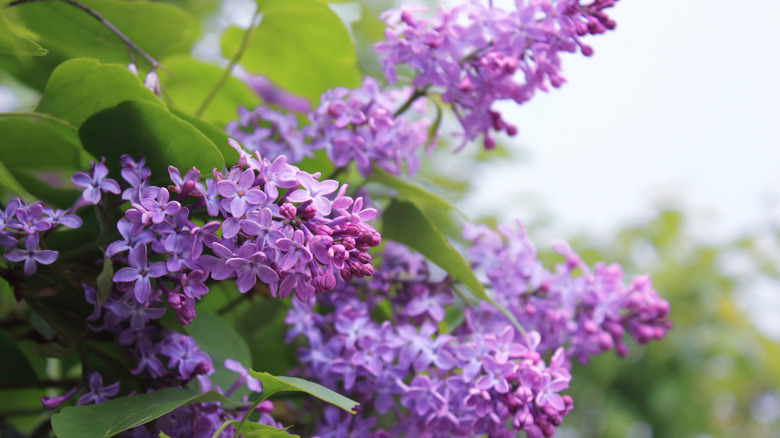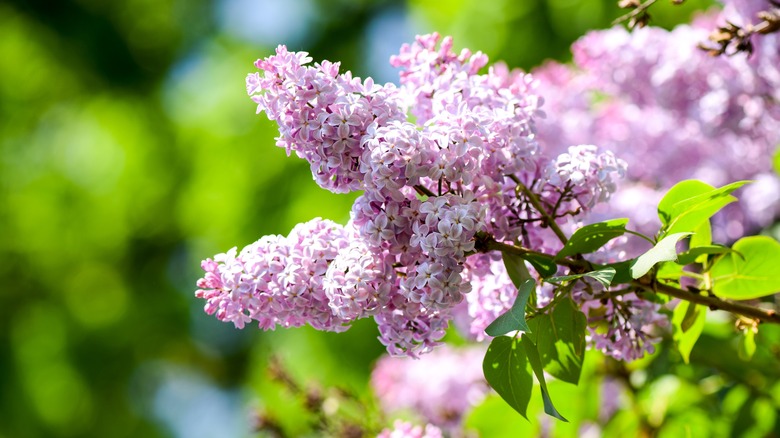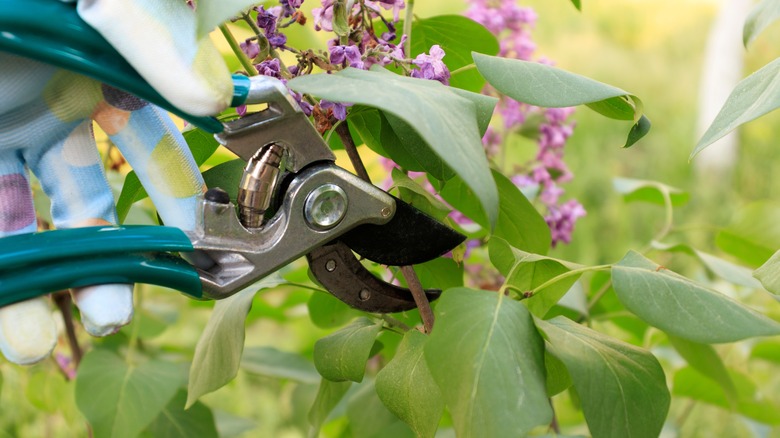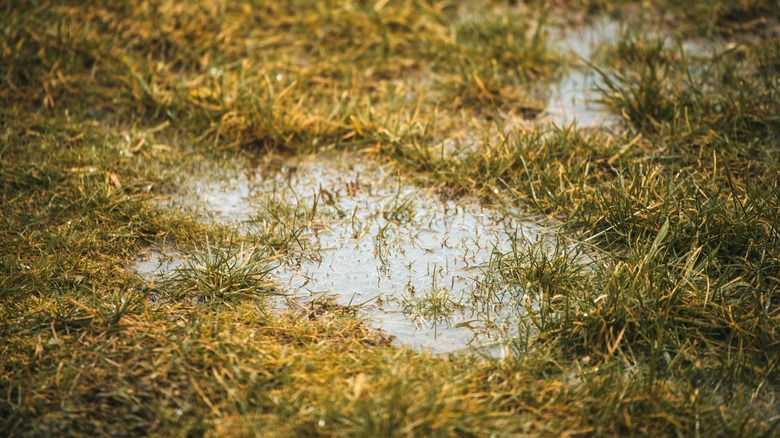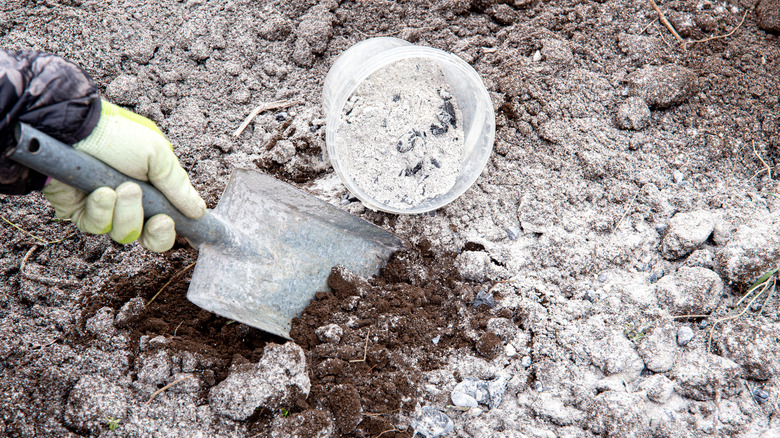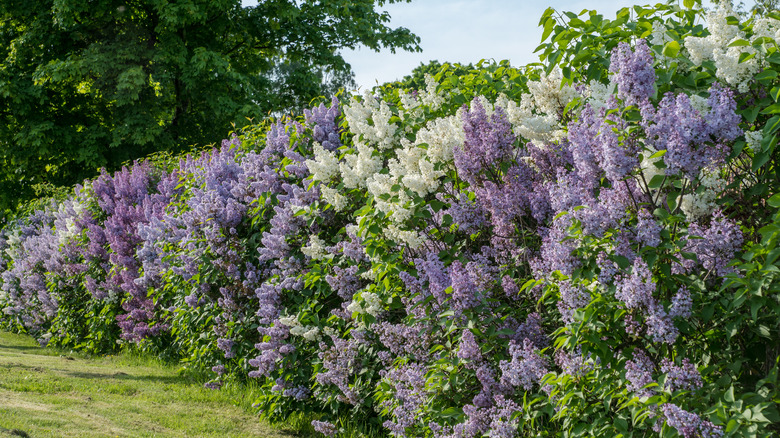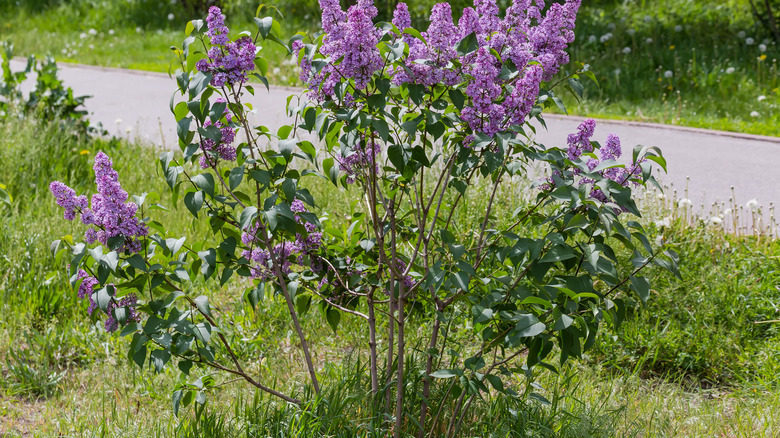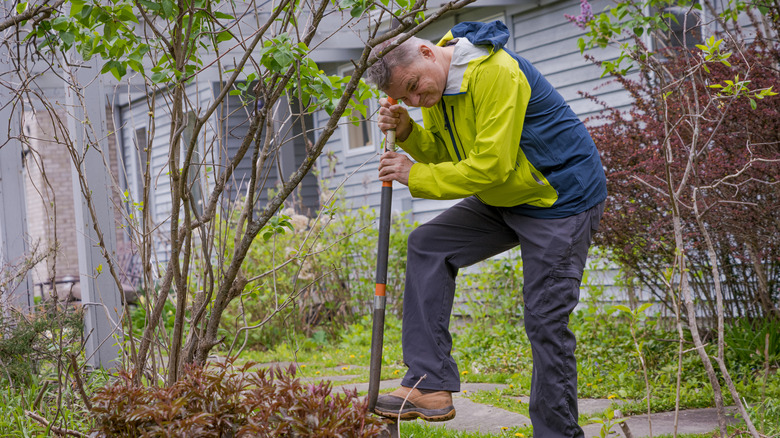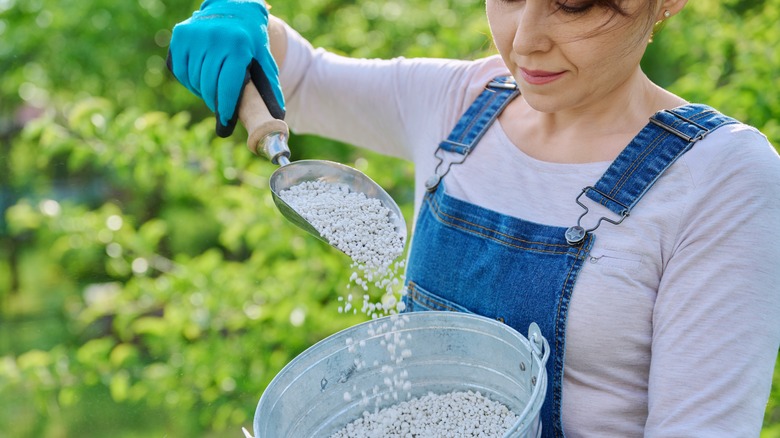Our Professional Gardener Gives 8 Reasons Your Lilacs Aren't Blooming Like They Used To, And What To Do About It
Lilacs are a beloved, old-fashioned spring flower that many people look forward to seeing in bloom each year. Their intoxicating fragrance is a welcome experience, and even one shrub can fill the air with sweet floral perfume. Lilacs can be very long-lived, and over time mature shrubs grow as high as small trees, up to 20 feet, depending on the variety. If your lilacs aren't blooming as fully as they used to, there are several reasons this could be happening.
Lilacs come in a very wide range of cultivars. And, with some new hybrids, these spring flowers can come in more compact or dwarf varieties that can be grown in smaller gardens or in containers. While their colors usually range from white to dark purple, there are also many shades of lavender and even some pink. These flowers bloom for about two to three weeks in May, with some varieties blooming a bit earlier or later than others.
While this blooming plant isn't very fussy about its growing conditions, there are a few general things you should know when you plan to add lilacs to your garden. First of all, they need full sun to bloom — at least six hours a day to consistently produce flowers. Sun exposure is often one of the reasons that long-lived flowering shrubs are no longer blooming as abundantly, but there are other reasons why your lilac's blooms are less vigorous than they used to be.
Not enough sun
If your lilacs have been in their current location for more than a few years but are blooming less than they used to, observe the amount of sun exposure they receive. Sometimes, over time, a nearby tree or hedge will grow larger and obscure the sunlight the lilac needs in early spring to flower. If your lilac can be relocated to a sunnier spot — try for a southern exposure spot with six hours of sun — the flowering should resume. You can also try trimming the tree or hedge to allow for more sun exposure in spring.
Pruning too early or too late
Proper timing when pruning lilacs to keep them healthy is important to consider. Some gardeners who are inexperienced with growing lilacs may not realize that they bloom on old wood and start forming new buds almost immediately after the spring flowering period ends. It's crucial to do any pruning within two weeks after the last flowers have dropped to prevent removing any newly-forming buds. Any dead or damaged branches should also be removed at this time.
Drainage issues
Good drainage is important for all kinds of plants. Long-lived shrubs like lilacs need to be in spots with proper drainage to keep their roots healthy and prevent rot, which can damage the plant and affect growth, as well as its ability to form flower buds. Planting your lilac in poorly draining soil may cause stunted growth or failure to bloom. If your lilac is already established but the spot gets too wet, consider moving it to a spot with better drainage, and add good soil amendments like humus and compost.
Soil conditions
Lilacs aren't super fussy, but they do require good, rich soil to stay healthy and produce flowers — and they prefer slightly alkaline soil rather than acidic. If you're encountering issues with your soil, keep in mind that pine and other conifer needles can affect the soil's acidity. If these kinds of needles tend to accumulate near your lilac, do your best to remove them. In spring, right after pruning, or in autumn, spread a layer of well-rotted manure mixed with lime or natural (untreated) wood ash around the base of the lilac. This will improve soil conditions and keep alkalinity at a healthy level.
Needs pruning
If your lilac has gotten too big, this can mean it's in need of pruning. Although lilacs bloom on "old wood" (last year's growth) like hydrangeas, older lilacs tend to produce better flowers on younger canes. Giving your lilac a hard pruning to remove older wood will rejuvenate its overall growth. You can do this hard pruning in stages over several years, starting with interior or exterior canes and cutting them back to two or three feet tall. Within several years, if your lilac has ample sun exposure, it should start blooming vigorously again.
Too many suckers
The ideal number of mature canes for a lilac is 10, but over time mature lilacs often put out many young "suckers" that may eventually grow into canes. These suckers can draw energy and nutrients from the main plant and affect your lilac's flowering capability. It's good to trim or remove these suckers every year by digging them and/or cutting them back. If they have roots on them, they can be replanted, but it takes a few years for these lilac suckers to grow into flowering shrubs.
Weeds or plants competing for nutrients
Mature lilacs often function as trees in the landscape, so it's understandable that you may encounter grass growing around their base. However, allowing grass, weeds, or perennials to grow too thickly near the base of your lilac can draw important nutrients and water away from the plant. Keep the base of your lilac weeded and clear of grass, and divide or move any perennials that spread too close. Keeping a light layer of natural mulch around your lilac will help deter weeds and preserve nutrients and moisture.
Too much fertilizer
Though a moderate use of fertilizer may help your lilac bloom, generally, the plant shouldn't need it. Some fertilizers will even inhibit blooms because they cause your lilac's leaves to grow bigger. Applying a small amount of balanced 10-10-10 fertilizer in late winter (early March) should be sufficient for the entire season. If your lilac seems to need more nutrients, enrich the soil at the base with some aged manure and compost rather than more fertilizer. If you normally fertilize your lilac every year and other conditions are suitable, try skipping a year to see if blooming improves.
